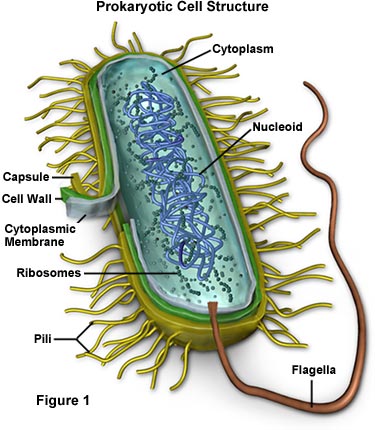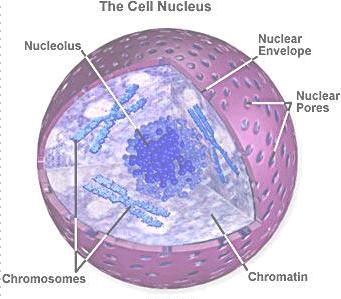
Nucleus

Cytoskeleton

By: Robbie, Lexi, Arvin and Victor
Sources -
http://www.immediart.com/catalog/images/big_images/SPL_6_P780110-Fibroblast_cells_showing_cytoskeleton.jpg
http://z.about.com/d/biology/1/0/H/1/nucleus.jpg
Four Questions
1) Identify the major cell types with images and texts. What is the limit of cell size? (Why are cells so small?)
Prokaryotic
Prokaryotic cells don’t have a nucleus, or most of the organelles found in a Eukaryotic cell. Attached on the outside of the cells are either flagella or pili. They are proteins that help the movement of the cell. The flagella and pili are attached to the cell envelope, which has three layers, the outermost is the capsule, then the cell wall and then the cytoplasmic membrane. On the inside of the cell envelope is the cytoplasmic region. This contains DNA and ribosomes.

http://library.thinkquest.org/C004535/prokaryotic_cells.html
http://micro.magnet.fsu.edu/cells/procaryotes/images/procaryote.jpg
Eukaryotic
Eukaryotic cells are 10 times the size of prokaryotic cell. They contain a cell nucleus, which a prokaryotic cell does not. They also have specific compartments (called organelles), unlike the Prokaryotic cell. They perform metabolic functions, energy conversion, structural support and cellular movement.

Cell Size
Cells are very tiny, too tiny for the eye to see on its own. Most cells range between 10 and 100 um. The cells ability to function depends on its size. A cell must be big enough to hold DNA, protein molecules and other internal structures, but must be small enough to keep the right amount of nutrition and oxygen from the environment, and must still be able to dispose of its waste.
(2) Is this organelle common to prokaryotic and eukaryotic cells? Where are they different?
The nucleus and cytoskeleton is common to all eukaryotic cells. The cytoskeleton is also present in prokarytoic cells, however the nucleus is not. Every cell has a cytoskeleton. This is like the bones of a cell. A cell functions like a human body; without bones (cytoskeleton), the organism/cell will simply become a blob of skin. For a cell, the cell will simply be like a puddle. Also, organelles won't be able to be transported on the cytoskeleton.
(3) What does this statement refer to "Eukaryotic cells are often referred to as highly compartmentalized."?
This statement refers to all the different organelles in Eukaryotic cells. Compartmentalization is when something is divided up into parts. So, each organelle inthe eukaryotic cell is surrounded by a membrane (to keep it separated), and acts like a compartement. Each organelle also does an individual job.
(4) Identify your organelle. Provide an image.
This is the nucleus 
This is the cytoskeleton - 
Sources -
http://micro.magnet.fsu.edu/cells/procaryotes/images/procaryote.jpg
http://universe-review.ca/I10-04-cellnucleus.jpg
http://www.williamsclass.com/SeventhScienceWork/ImagesCells/EukaryoticCell.jpg
http://www.bscb.org/softcell/images/mp_tripple.gif
Comments (0)
You don't have permission to comment on this page.